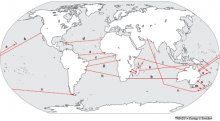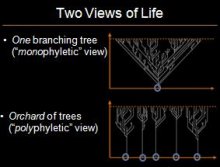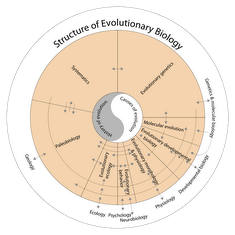 Casey Luskin
Casey Luskin
Defenders of evolution commonly make the assertion that biogeography provides unequivocal support for neo-Darwinian theory. For example, the pro-Darwin National Center for Science Education (NCSE) claims that "consistency between biogeographic and evolutionary patterns provides important evidence about the continuity of the processes driving the evolution and diversification of all life, " and "[t]his continuity is what would be expected of a pattern of common descent."
The reality, however, is that the NCSE has dramatically overstated its case.
In making its case for common descent, the NCSE essentially ignores the numerous and significant examples where the biogeographical evidence does not fit well with purported "evolutionary patterns." In other words, they cherry pick the data and ignore examples where there are great discontinuities between biogeography and neo-Darwinism. One of the most significant discontinuities, the origin of South American monkeys ("called platyrrhines"). The NCSE made a specific argument for common descent based upon the "continuity" and "consistency" between biogeography and evolution. The evidence presented below refutes their assertion.
In its response regarding marsupials, the NCSE admits, "If the [North American] opossum truly had roots in Australia, it would indeed be a biogeographic conundrum." Since North American opossums are not descended from Australian "possums, " their high morphological similarity dictates to neo-Darwinian evolutionists that this must be another case of extreme convergent evolution that challenges the methodology by which neo-Darwinism infers homology and common descent.
 But what if North American opossums were descended from Australian possums? Why does the NCSE observe that this hypothetical situation would pose a "biogeographic conundrum?" The NCSE says this because there would be no route by which Australian possums could have migrated to North America. The NCSE's reasoning here is sound: they presume that if organisms in Locale B are descended from organisms in Locale A, then there must have been some migration route by which organisms could migrate from A to B. If there is no such route, then we're presented with, in the NCSE's own words, a "biogeographic conundrum." Using such reasoning, the NCSE then argues that marsupials and other groups have biogeographic histories that are congruent with the tectonic history of islands and continents, thus allegedly supporting common descent:
But what if North American opossums were descended from Australian possums? Why does the NCSE observe that this hypothetical situation would pose a "biogeographic conundrum?" The NCSE says this because there would be no route by which Australian possums could have migrated to North America. The NCSE's reasoning here is sound: they presume that if organisms in Locale B are descended from organisms in Locale A, then there must have been some migration route by which organisms could migrate from A to B. If there is no such route, then we're presented with, in the NCSE's own words, a "biogeographic conundrum." Using such reasoning, the NCSE then argues that marsupials and other groups have biogeographic histories that are congruent with the tectonic history of islands and continents, thus allegedly supporting common descent:
The same pattern of diversification and migration seen in marsupials can also be seen in other groups of plants and animals. That consistency between biogeographic and evolutionary patterns provides important evidence about the continuity of the processes driving the evolution and diversification of all life. This continuity is what would be expected of a pattern of common descent, and is not what would be expected with the creationist orchard scheme. With marsupials, the NCSE claims that the "continuity" of geography and evolution predicts that there will always be some land bridge or migratory pathway which terrestrial organisms can follow. This was claimed to allegedly show "consistency between biogeographic and evolutionary patterns" that demonstrates "what would be expected of a pattern of common descent." Ignoring the NCSE's continued inappropriate usage of the "creationist" label, their claim is simply not true, for there are many examples of terrestrial organisms existing and appearing in locations where no land-based migratory route is apparent. The NCSE's approach is to cherrypick examples to support their arguments for universal common descent, but a large number of "biogeographic conundrums" that challenge neo-Darwinism could be discussed.
Source: www.ideacenter.org
The Scientific Alternative to Neo-Darwinian Evolutionary Theory
Book (The Word For Today)
|
" The theory of neo-Darwinian evolution cannot
by FriendofFargoRationally be doubted by any educated person"
according to Francis Collins, NIH head and evangelical Xianhas in " the language of god" where he tries to combine Theistic Evolution and the Reasonable Christian.
Collinss main argument in The Language of God makes three related claims:
1.Faith that places God in the gaps of current understanding about the natural world may be headed for crisis if advances in science subsequently fill those gaps (p. 93).
We cannot use causal action by a transcendent intelligence to explain puzzling natural phenomena. In short, no God‐of-the‐ gaps allowed
You might also like
Retiring at 82: You've got to like your work — ABC Local
She's spent the last 20 years working as a lecturer in horticulture at Charles Darwin University. "You've to like your work," says Mrs Hagan when asked why she kept working long after she could have put her feet up. "I like the students, the students ..
Uni ratings' big tick — The Australian Financial Review
.. the University of Wollongong, Macquarie University, University of Technology Sydney, the University of South Australia, Deakin University, Murdoch University, Charles Darwin University, Curtin University of Technology, Flinders University, Griffith ..
Sugar glider moves around the family tree — ABC Online
Thought for more than 150 years to be a subspecies of sugar glider, researchers based at Charles Darwin University in Darwin have recently found it more closely resembles two other species of glider, and they speculate that it may even represent an ..

|
Gene Avatars: The Neo-Darwinian Theory of Evolution
eBooks (Springer)
|

|
Darwinian Evolution and Classical Liberalism: Theories in Tension
Book (Lexington Books)
|
FAQ
Can you answer Charles Darwin Trivia Quiz?
Do you know the answer to any of these questions?????
1) Charles’s Wife, Emma, was a keen and accomplished pianist. From whom did she once receive piano lessons?
A) Fryderyk Chopin
B) Hector Berlioz
C) Franz Liszt
2) When Charles and Emma were first married, they lived in a house in Gower Street, London (now the site of a UCL biology building). What was their nickname for the house?
A) Maer Mansions
B) Macaw Cottage
C) The Boxrooms
3) Which of the following people was NOT left handed?
A) Erasmus Darwin (Charles's…
1. A (from Chopin in Paris)
B - Finches
's_finches
5. C - The Princess and the Goblin
A - Walter Crick
"Crick replied with not only the answers, but also the beetle and the shell. Both arrived alive, so Darwin put the "wretched" insect in a bottle with chopped ..."
10. B - Australia
"Charles Darwin: The Voyage of the Beagle: Chapter XIX: Australia. ... and he who thinks with me will never wish to walk again in so uninviting a country"
15. Joseph Parslow
" Darwin's family home. Down House…
Can you find the answers the this quiz (mostly basic historic, literary, and scientific trivia)?
A recent survey said that most teenagers living in the US or Europe should be able to get at least 12 of these 16 questions right. I managed to get 15 correct, (I couldn't finish Number 1). (P.S. This survey isn't mine, I just found it and thought it was interesting to see how many could get it).
1. List 10 US Presidents and Major things they did in office.
2. Describe the French Revolution that began in 1789 in moderate detail.
3. List and name the six wives of Henry VIII of England, and what happened to each one.
4. List at least 3 Ancient Humanoid…
I'm not a teenager, and I believe I can answer at least 12 without further research, but anyone claiming that most American or European teenagers could, is dreaming.
I would suggest not one in a thousand could name 5 lovers/husbands of Cleopatra VII.
 But what if North American opossums were descended from Australian possums? Why does the NCSE observe that this hypothetical situation would pose a "biogeographic conundrum?" The NCSE says this because there would be no route by which Australian possums could have migrated to North America. The NCSE's reasoning here is sound: they presume that if organisms in Locale B are descended from organisms in Locale A, then there must have been some migration route by which organisms could migrate from A to B. If there is no such route, then we're presented with, in the NCSE's own words, a "biogeographic conundrum." Using such reasoning, the NCSE then argues that marsupials and other groups have biogeographic histories that are congruent with the tectonic history of islands and continents, thus allegedly supporting common descent:
But what if North American opossums were descended from Australian possums? Why does the NCSE observe that this hypothetical situation would pose a "biogeographic conundrum?" The NCSE says this because there would be no route by which Australian possums could have migrated to North America. The NCSE's reasoning here is sound: they presume that if organisms in Locale B are descended from organisms in Locale A, then there must have been some migration route by which organisms could migrate from A to B. If there is no such route, then we're presented with, in the NCSE's own words, a "biogeographic conundrum." Using such reasoning, the NCSE then argues that marsupials and other groups have biogeographic histories that are congruent with the tectonic history of islands and continents, thus allegedly supporting common descent:







 The modern evolutionary synthesis is a union of ideas from several biological specialties which provides a widely accepted account of evolution. It is also referred to as the new synthesis, the modern synthesis, the evolutionary synthesis, millennium synthesis and...
The modern evolutionary synthesis is a union of ideas from several biological specialties which provides a widely accepted account of evolution. It is also referred to as the new synthesis, the modern synthesis, the evolutionary synthesis, millennium synthesis and...